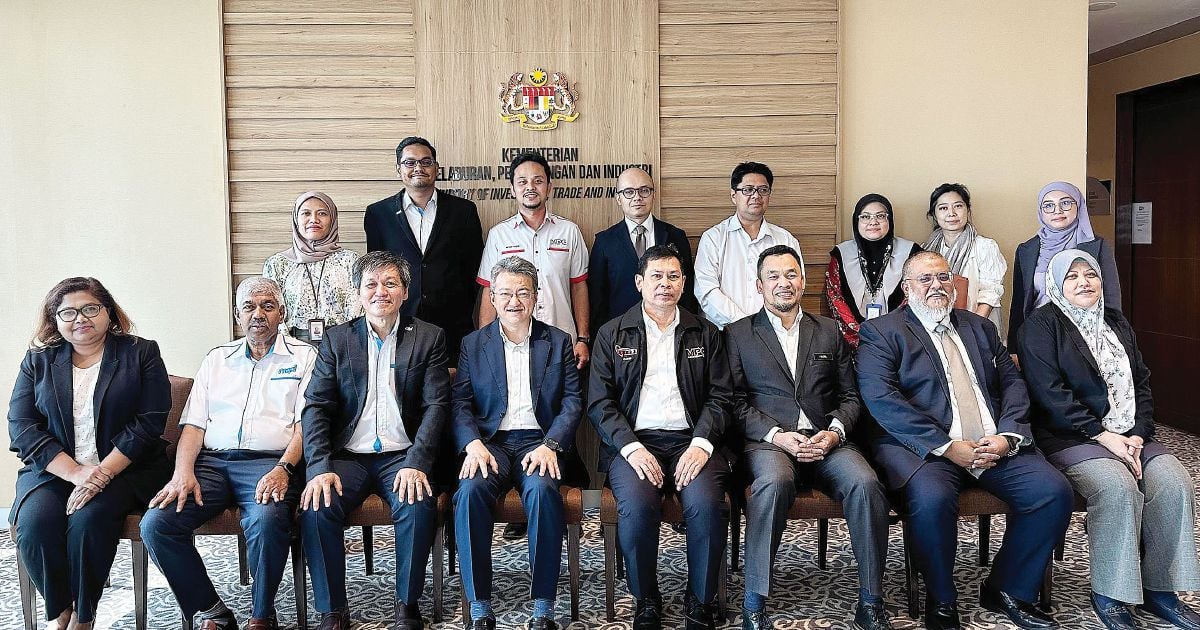KUALA LUMPUR: The pharmaceutical industry is expanding export capacity and fortifying national medicine security through collaborations with government and industry players.
Following a slowdown during the Covid-19 pandemic, the sector has regained its momentum.
Its labour productivity, which climbed from RM90,247 in 2017 to RM96,037 in 2019, declined to RM85,105 in 2022 amid global supply chain disruptions and rising input costs. The industry rebounded from RM90,063 in 2023 to a projected RM96,928 in 2024, nearly matching pre-pandemic levels.
Although still below the national average productivity of RM99,265, this steady rebound underscores the industry’s resilience, supported by automation, digitalisation and stronger quality standards.
The Pharmaceutical Productivity Nexus (PPN), under the Malaysia Productivity Corporation (MPC), serves as a key initiative that unites public and private stakeholders to enhance competitiveness, boost productivity, strengthen operational efficiency, add value across the pharmaceutical ecosystem, and promote innovation throughout the value chain.
STRATEGIC ROLE
Recognised as one of five priority sectors under the New Industrial Master Plan 2030 (NIMP 2030), the pharmaceutical industry plays a central role in advancing Malaysia’s economic complexity. Under Mission 1: Advance Economic Complexity, the NIMP 2030 outlines strategies to build high-value pharmaceutical capabilities, strengthen domestic linkages and expand the nation’s footprint in global value chains.
The plan focuses on developing biopharmaceuticals, biosimilars and active pharmaceutical ingredients, while promoting innovation, clinical research and export of Malaysian-made medical products.
It also aligns with the National Vaccine Development Roadmap (NVDR) and emphasises data-driven collaboration to enhance efficiency and knowledge-sharing in the sector.
Ultimately, NIMP 2030 envisions Malaysia’s transformation from a generic drug producer to an innovation-driven pharmaceutical powerhouse, positioning the sector as a cornerstone of industrial advancement and national health security.
“The pandemic taught us that medicine security is not optional. It’s a national priority,” said Ch’ng Kien Peng, president of the Malaysian Organisation of Pharmaceutical Industries and champion of PPN.
A STRUCTURAL PIVOT: FROM FRAGMENTATION TO COORDINATION
The pharmaceutical landscape is undergoing a fundamental transformation, from fragmented efforts to a coordinated, high-impact growth strategy driven by two powerful sub-committees under PPN.
The Pharma Manufacturing Hub (Export) Sub-Committee is spearheading a drive to strengthen Malaysia’s global pharmaceutical presence. Domestic manufacturers, many already certified under PIC/S Good Manufacturing Practice (GMP), have earned a strong international reputation for quality and compliance, with Malaysian-made medicines now accepted in 83 countries, including highly regulated markets such as the United States and the European Union.
While Malaysia’s pharmaceutical quality meets global standards, speed and market access are now the next frontier. To address this, the sub-committee is collaborating with the National Pharmaceutical Regulatory Agency (NPRA) to implement the Priority Review Pathway for exports, a strategic measure aimed at accelerating product registration and market entry for locally manufactured pharmaceuticals.
At the same time, the sub-committee continues to lead market expansion efforts, focusing on deepening export opportunities across emerging regions.
Regionally, this agenda supports Asean’s goal of a harmonised pharmaceutical market. By leveraging the Asean Mutual Recognition Framework, Malaysian manufacturers will benefit from streamlined GMP and product registration standards, reducing compliance duplication, improving efficiency and further positioning Malaysia as a trusted regional hub for quality pharmaceuticals.
The Biopharma Sub-Committee is charting Malaysia’s entry into the biosimilars and vaccine manufacturing segment, a high-value, innovation-led area with immense global potential. As patents for key biologics near expiry, new opportunities are opening for local players to enter the next frontier of pharmaceutical production.
Malaysia’s success in fill-and-finish operations for Covid-19 vaccines has demonstrated its technical capability and regulatory maturity. Building on this foundation, the sub-committee is now focused on developing an enabling ecosystem to attract major investments, strengthen R&D capabilities and foster collaborations with leading global biotech firms.
This strategic push will not only strengthen Malaysia’s health security and resilience but will also accelerate its transformation into a regional biopharmaceutical leader, advancing the long-term objectives of NIMP 2030 and solidifying its place in the global pharmaceutical value chain.
Meanwhile, several key national-level projects are underway to remove industry bottlenecks.
A high-impact task force, involving the Fire and Rescue Department and NPRA, is focused on a critical bottleneck: the multi-year “gestation period” for building new manufacturing plants. By working to harmonise guidelines and streamline approvals, this project aims to significantly slash construction timelines, making Malaysia a more agile and attractive destination for both new and expansionary investment, whether foreign or domestic.
The PPN will serve as a key model under the Asean Drug Security and Self-Reliance (ADSSR) framework. By sharing Malaysia’s experience in streamlining plant approvals, fast-tracking product registration, and strengthening inter-agency coordination, PPN aims to support Asean’s broader vision of a resilient, self-reliant regional pharmaceutical ecosystem. This collaboration enhances not only Malaysia’s domestic competitiveness but also Asean’s collective capacity to respond to future health emergencies.
“Another task force is working to reduce our dependency on imports by creating incentives for the local manufacturing of drugs on the National Essential Medicines List, directly addressing our medicines security. This initiative is made even more viable by the opportunity presented by ADSSR, which creates a harmonised, larger regional market for these locally produced medicines,” said Ch’ng.
To sustain the momentum of ongoing reforms, he said the PPN is guiding the industry towards long-term strategic growth through the development of a Biopharma Manufacturing Roadmap — a blueprint to position Malaysia as a regional leader in high-value pharmaceutical production.
Ch’ng said the roadmap will serve as the foundation for the Asean Biopharma Alliance 2025, a regional platform aimed at fostering cross-border investment, shared research infrastructure and harmonised standards in biopharmaceutical production.
Aligned with national efforts such as the NVDR led by the Science, Technology and Innovation Ministry, these initiatives collectively advance a unified vision: building a resilient, innovative and self-reliant biopharma industry for the region.
For Ch’ng, the message to policymakers, investors and the global healthcare community is clear: Malaysia’s pharmaceutical sector is ready to step up, not just as an economic player, but also as a pillar of national well-being.
The vision is backed by concrete targets. For exports, the goal is to expand from 83 countries to 100 by the end of 2025 and increase overseas marketing authorisations to 2,300. For the high-value biopharma sector, the plan is to secure at least one confirmed manufacturing investment by year end.
© New Straits Times Press (M) Bhd






